F-100 Super Sabre: A Supersonic Coffin?
November 25th, 2023
9 minute read
A landmark in U.S. aviation, the F-100 Super Sabre was America’s first fighter jet capable of supersonic speeds in level flight. It saw extensive service in the Cold War and in the Vietnam War, but it was highly controversial due to it’s very high rate of accidents. In fact, nearly half of the planes built met an untimely end — due to accidents or enemy action. Dr. Will Dabbs explores this cutting-edge fighter, its role in flying operation “iron hand” suppression of enemy air defense missions, and plans to use it for lobbing nuclear weapons at the Soviet Union.
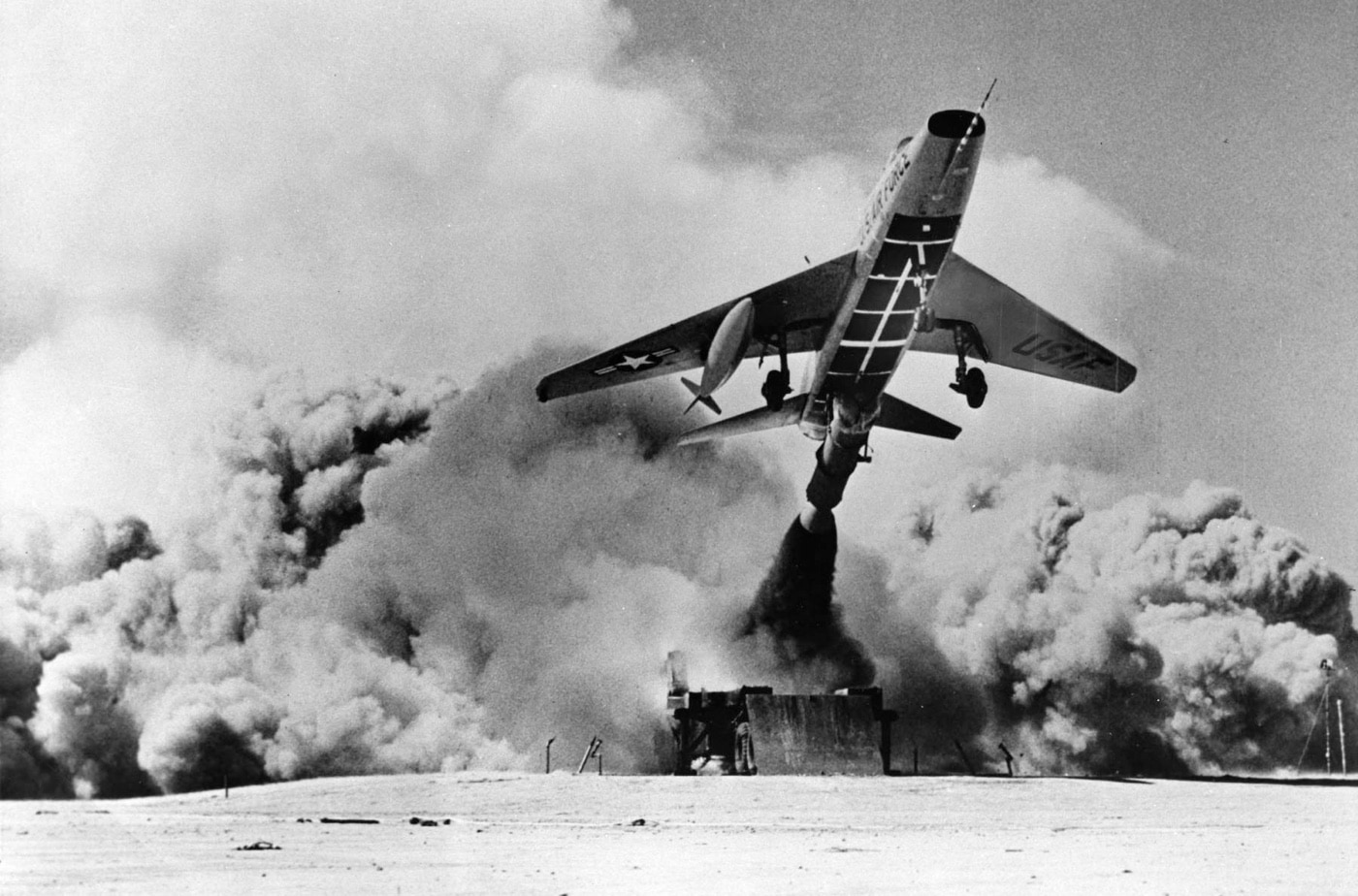
The first two-seat F-100F Super Sabres arrived at Korat Royal Thai Air Force Base in November of 1965. They flew their first successful Wild Weasel mission the following month. For the next seven months, Air Force pilots flew one of the most dangerous fighter aircraft in the world on the most dangerous combat missions in Vietnam. It’s a legitimate wonder any of them survived.
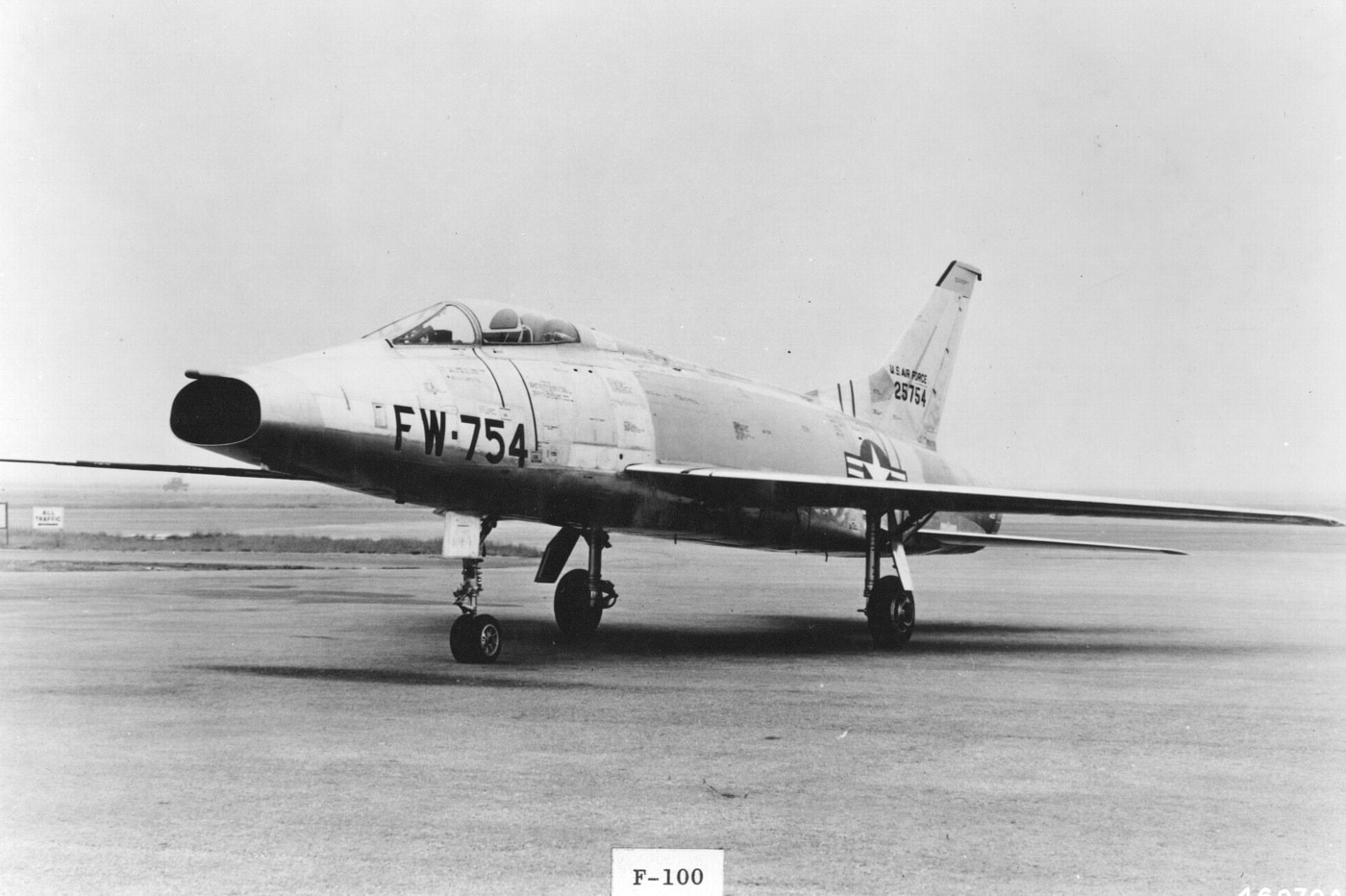
The war in Vietnam was transformational in its nature. Much of the war in Korea was waged with WWII-era weapons and tactics. By the mid-1960s, however, high-performance jet aircraft and advanced electronics had come to dominate the battlespace. Like all transformational military changes, however, these were rocky and painful.
Soviet Air Defense Systems
One of the revolutionary new weapons to see widespread deployment was the radar-guided surface-to-air missile. Russian SA-2 Guideline air defense missiles changed the way jets flew and fought over the jungles of Southeast Asia. It had been an SA-2 that brought down Gary Powers’ U-2 over the USSR in 1960.
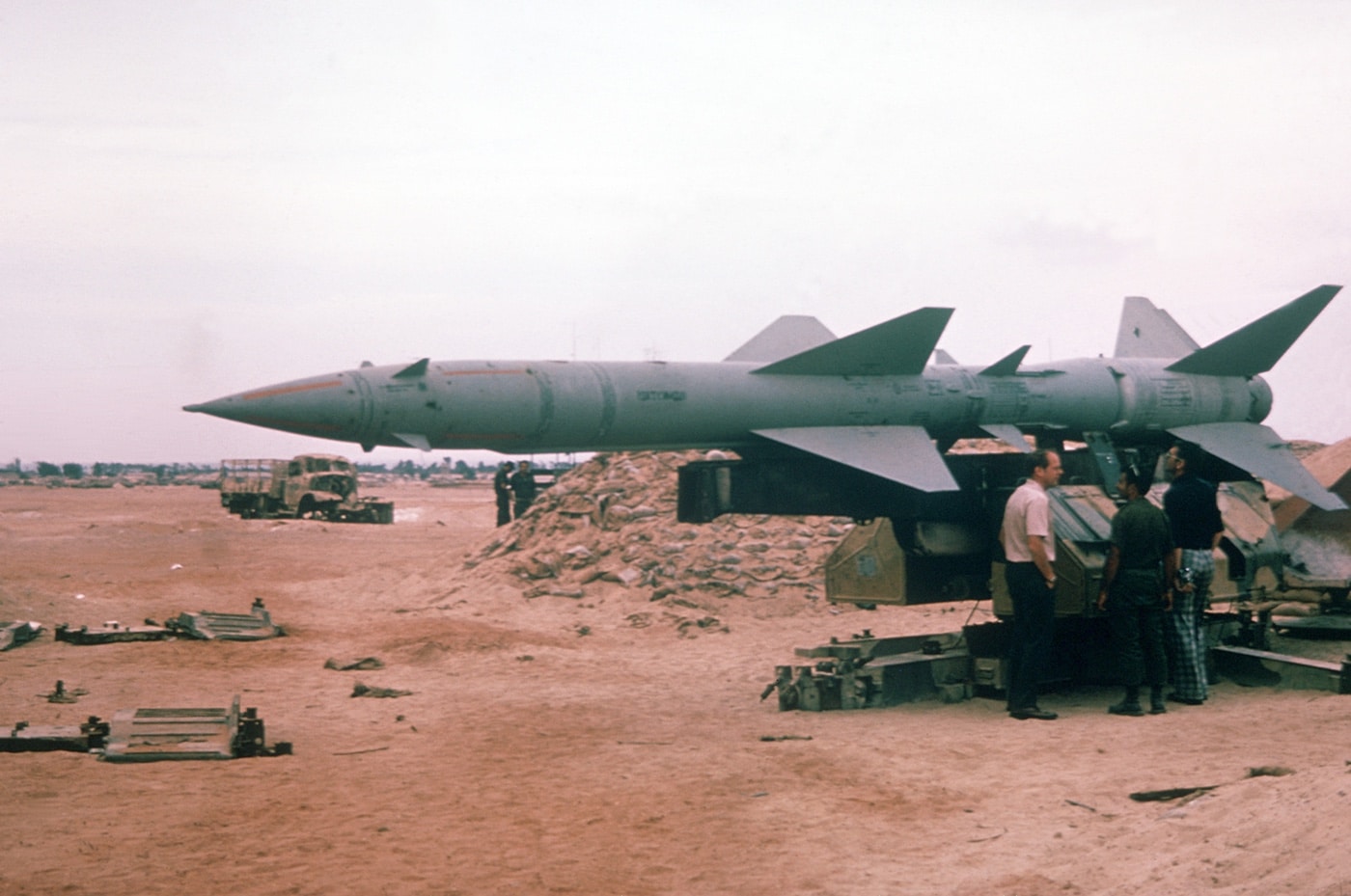
With acrimony smoldering on a geopolitical scale, the Soviets were more than happy to give their North Vietnamese buddies plenty of SA-2 anti-air systems to use against the American imperialists. This made the airspace above North Vietnam some of the most contested on the planet.
Enter the F-100 Wild Weasel
It became obvious that something must be done about the North Vietnamese SAMs. Strike aircraft attempting to take out infrastructure like bridges and railway lines were easy meat for these advanced radar-directed weapons. Pilots who flew against them described the 35-foot, 5,100-pound monsters as flying telephone poles. They had a 440-lb. high explosive fragmentation warhead and a 28-mile range. The answer to this anti-aircraft scourge was the Wild Weasel.
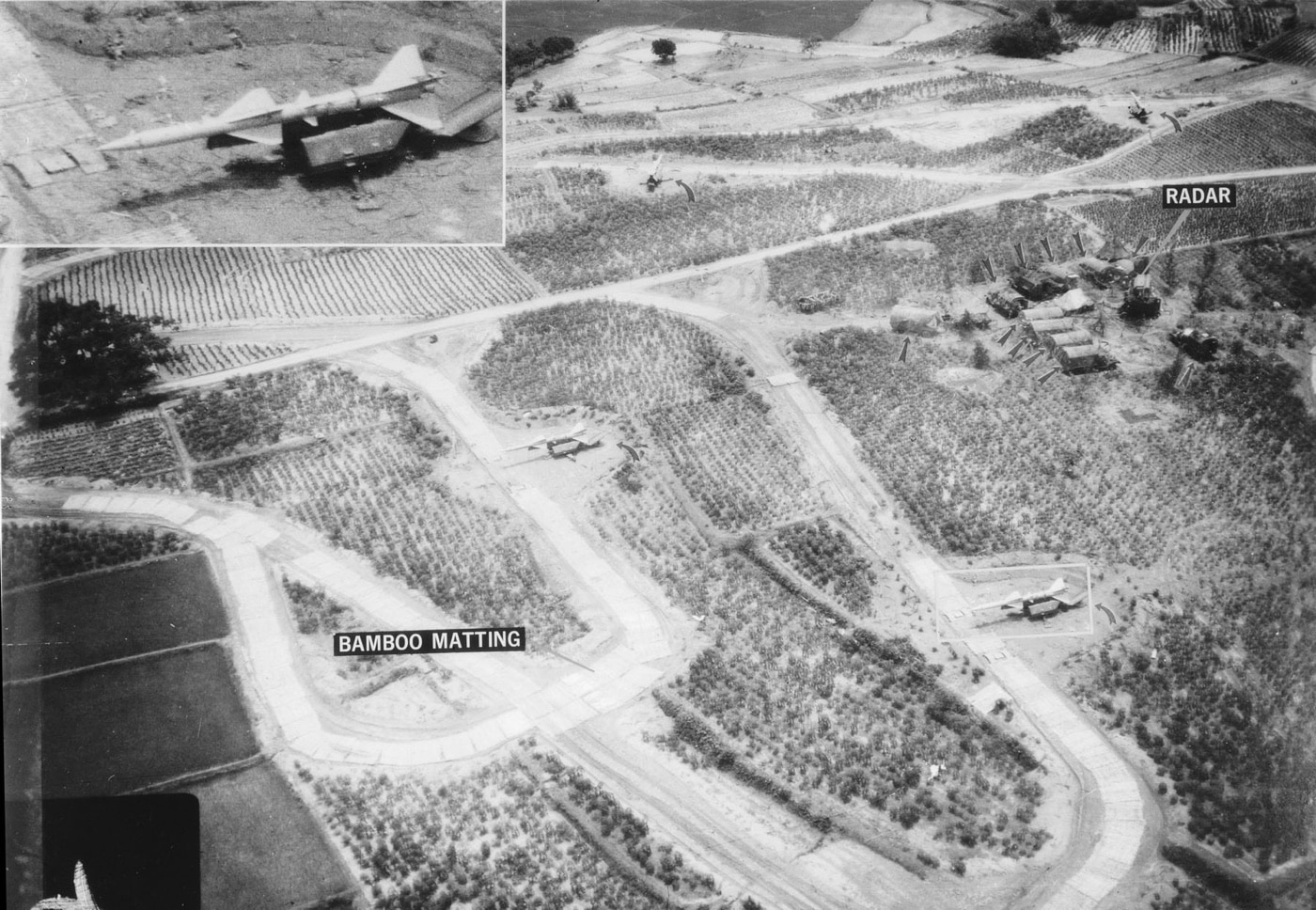
Wild Weasel was the name given to a bunch of crazy Air Force jet fighter pilots whose job it was to hunt the weapons that hunted jet fighters. Early in the war, the F-105 Thunderchief typically served as the primary strike aircraft, while the two-seat F-100F Super Sabre was the Weasel. Considering that the F-100 was a fairly shady aircraft to begin with, the Wild Weasel mission was unimaginably dangerous.
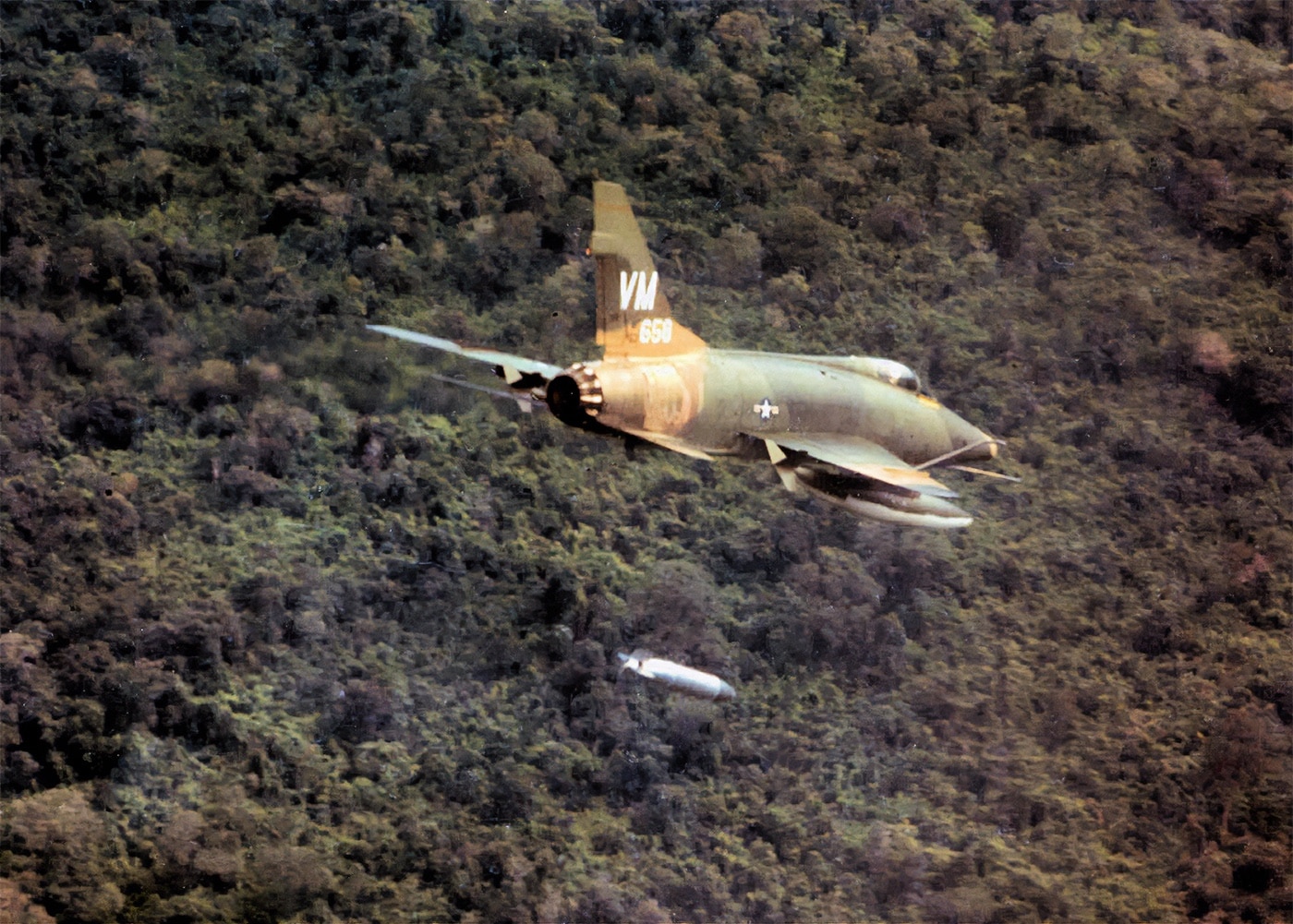
Nowadays, the F-35 Lightning II sports all sorts of classified interlinked combat systems that allow their pilots unprecedented situational awareness combined with state-of-the-art stealth capabilities. By contrast, back in 1965 the F-100 crews had a 3” cathode ray tube slaved to an LWR-300 Launch Warning Receiver. This crude little device was supposed to display a yellow line signifying imminent launch and then a red line once the enemy missile was in the air.
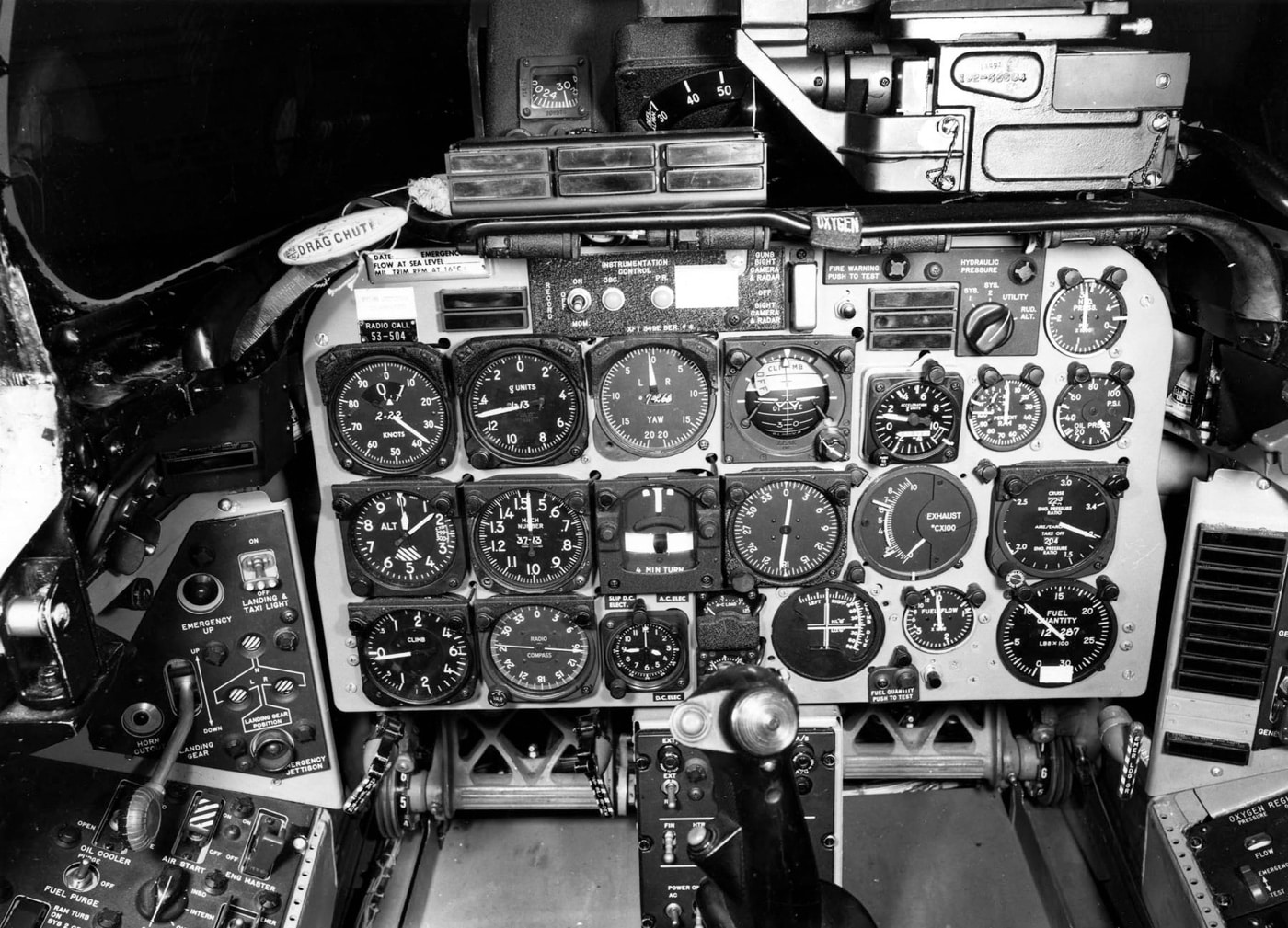
In the book First In, Last Out, Wild Weasel pilot Colonel Edward Rock said, “If a SAM was launched, then the azimuth strobe associated with the threat was supposed to blink at 3 cycles per second. I can say that I probably had more than 100 missiles launched at my aircraft and never, not even once, saw the strobe blinking. Probably busy with more important things like saving my life.”
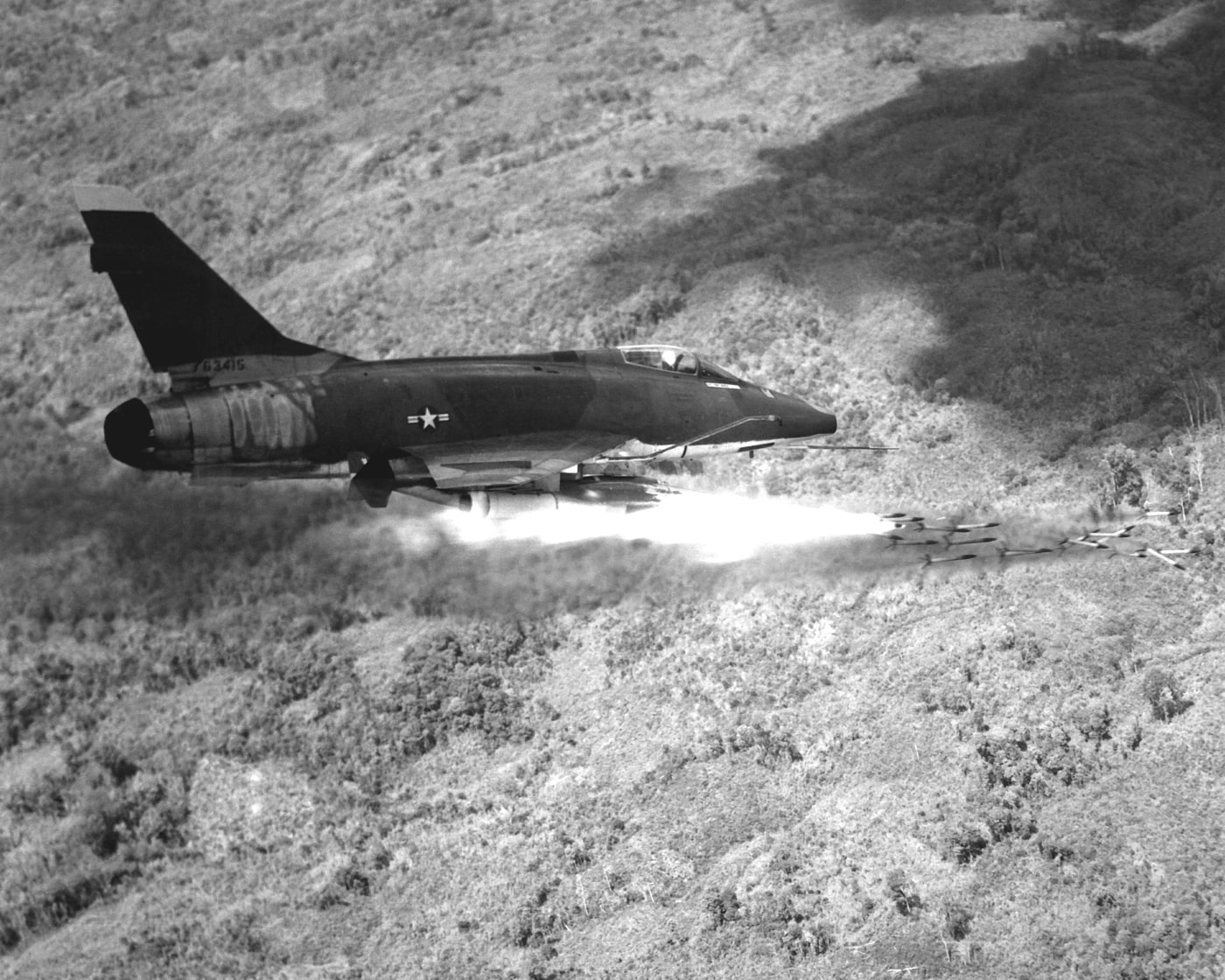
The plan, such as it was, had the F-100 planes go in first waiting to be illuminated by the North Vietnamese radars. Once they had the SAM sites located, they were to mark them with 2.75” smoke rockets and then roll clear for the F-105’s to take them out.
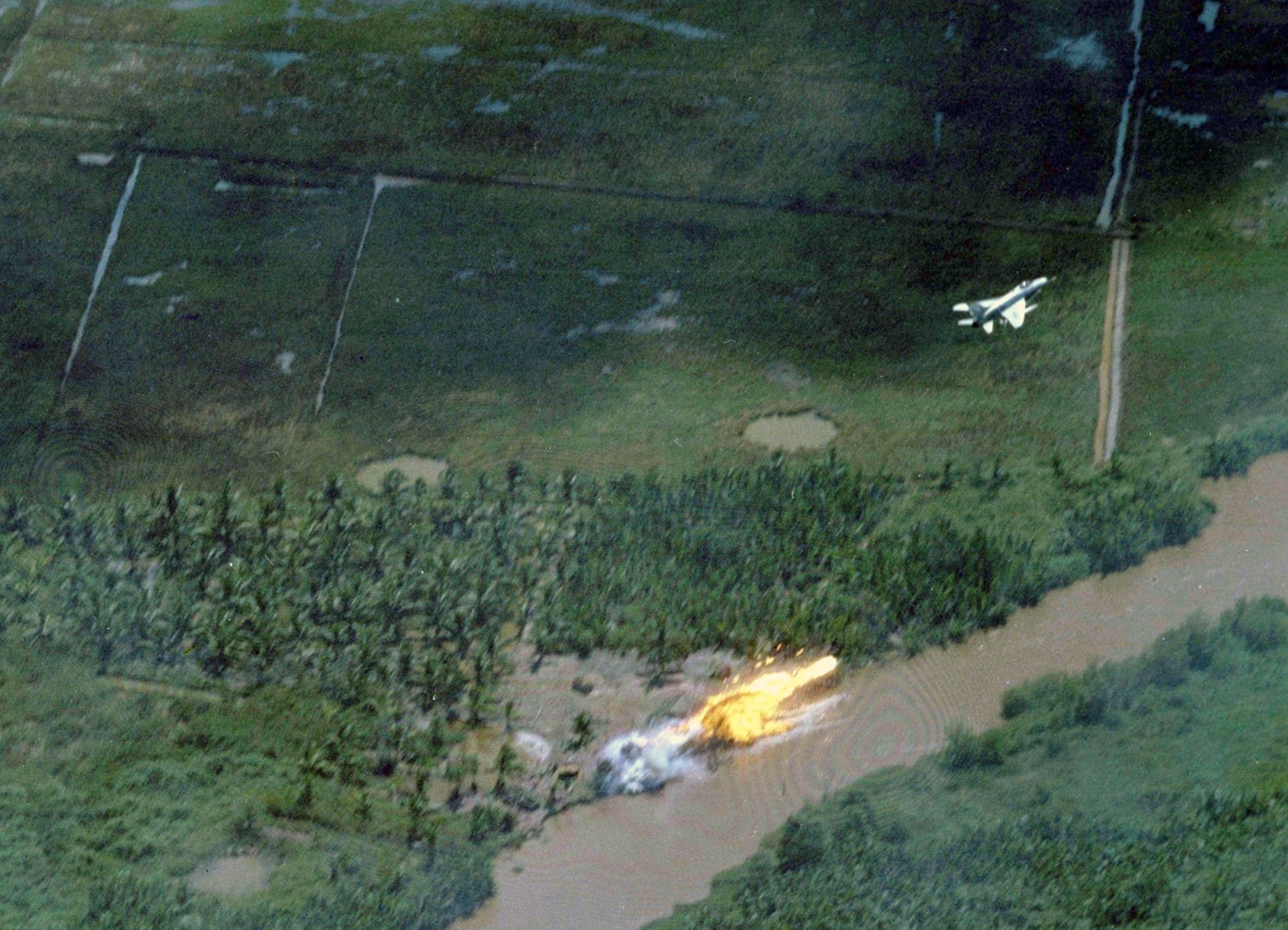
That looks great on paper. That’s more than a bit dicey in practice. Early on, pilots who were trained in air-to-air tactics flying these high-performance fighters not infrequently flew into the ground or succumbed to ground fire. However, they still took a heavy toll on North Vietnamese air defenses.
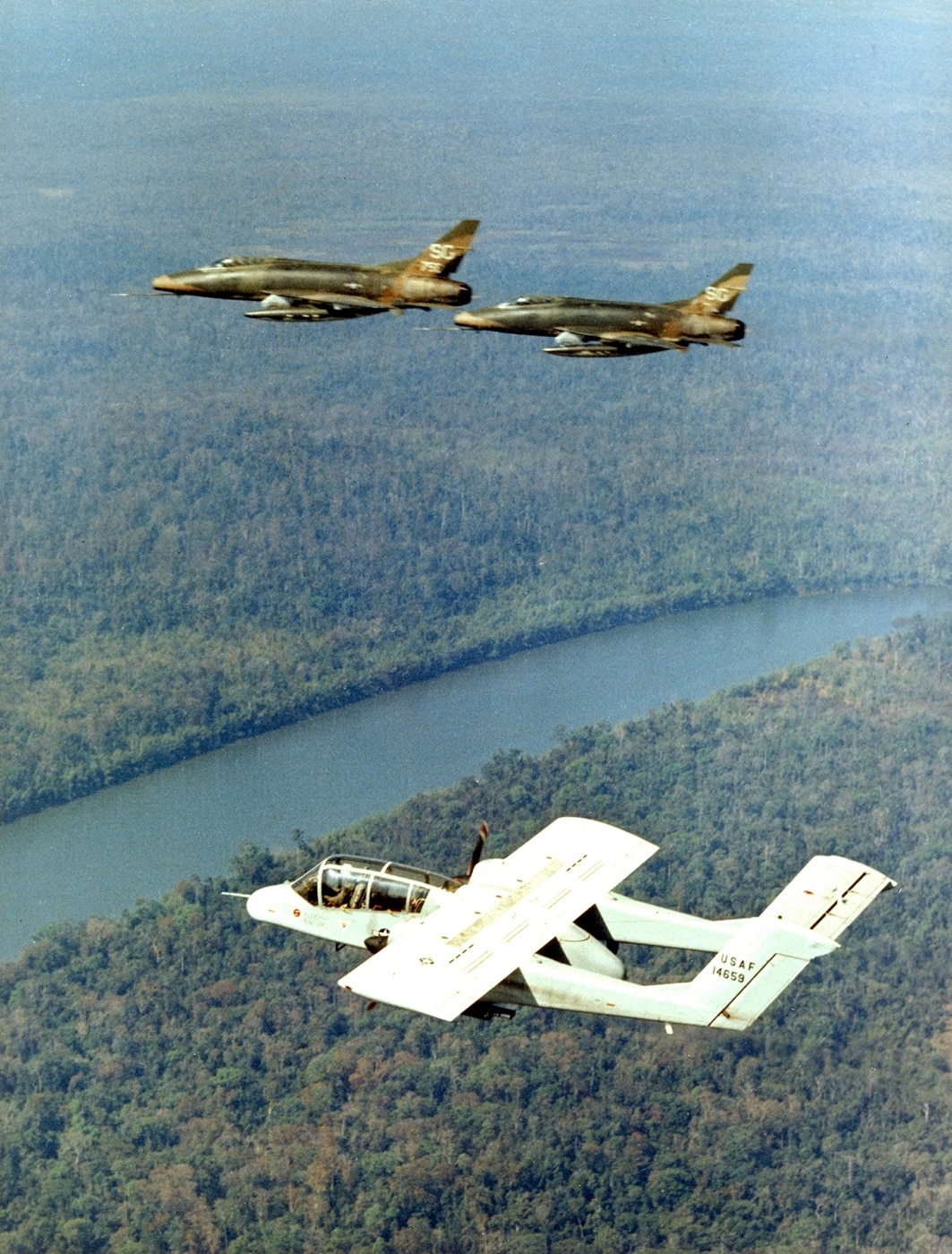
Origin Story
North American Aviation was one of America’s premiere producers of combat aircraft. North American developed the B-25 Mitchell, the P-51 Mustang, the F-86 Sabre and the X-15 rocket plane. They designed the F-100 as a speculative venture to replace the wildly successful Sabre Jet. Through a series of mergers, North American eventually folded into what is Boeing today.
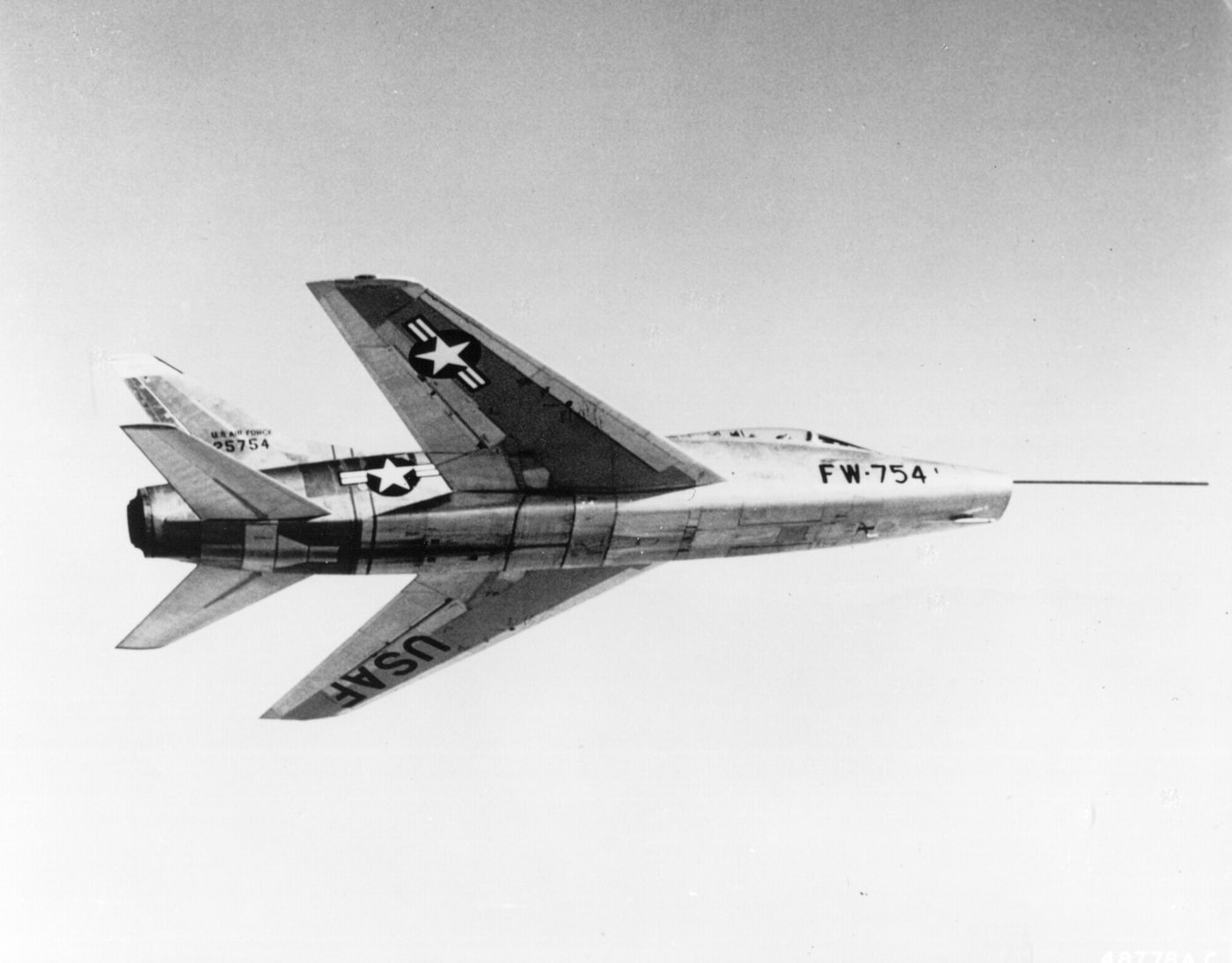
F-100 crews affectionately referred to the sleek, sexy plane the “Hun.” This was short for “Hundred.” With its wings swept back to 45 degrees and tapered airframe, the Hun exemplified 1950s Cold War high-performance aviation chic. The F-100 first flew in 1953. From the very beginning, however, the Hun was trouble.
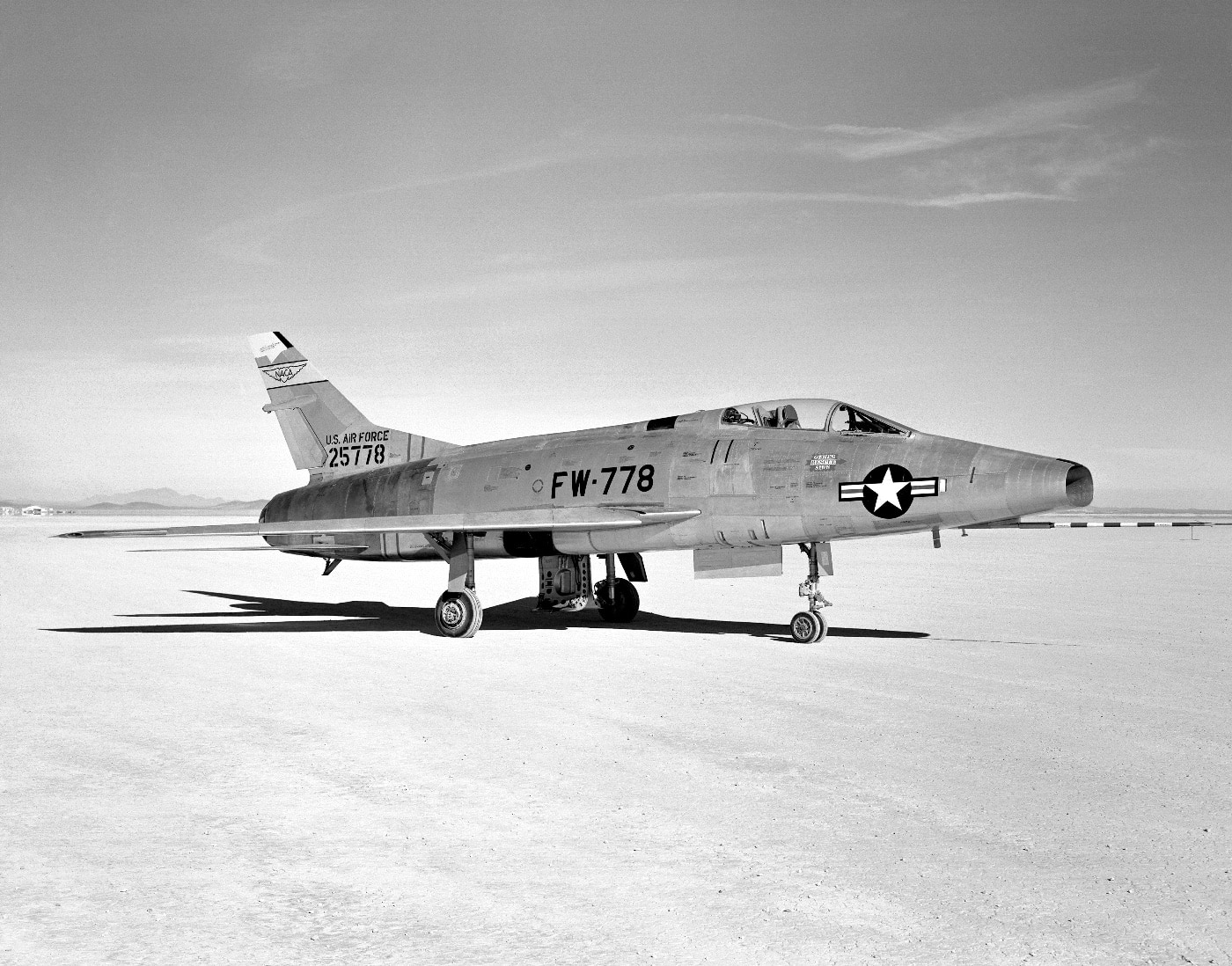
The YF-100A reached Mach 1.04 on its very first flight. Test pilots were giddy at the prospects. However, the rakish plane had a mean tendency toward yaw instability that produced a catastrophic condition known as inertia coupling. Under certain circumstances, this would destabilize the aircraft so quickly the pilot would not have time to compensate. Such a toxic state claimed the life of George Welch, North American’s chief test pilot, while dive testing an early F-100A in 1954.
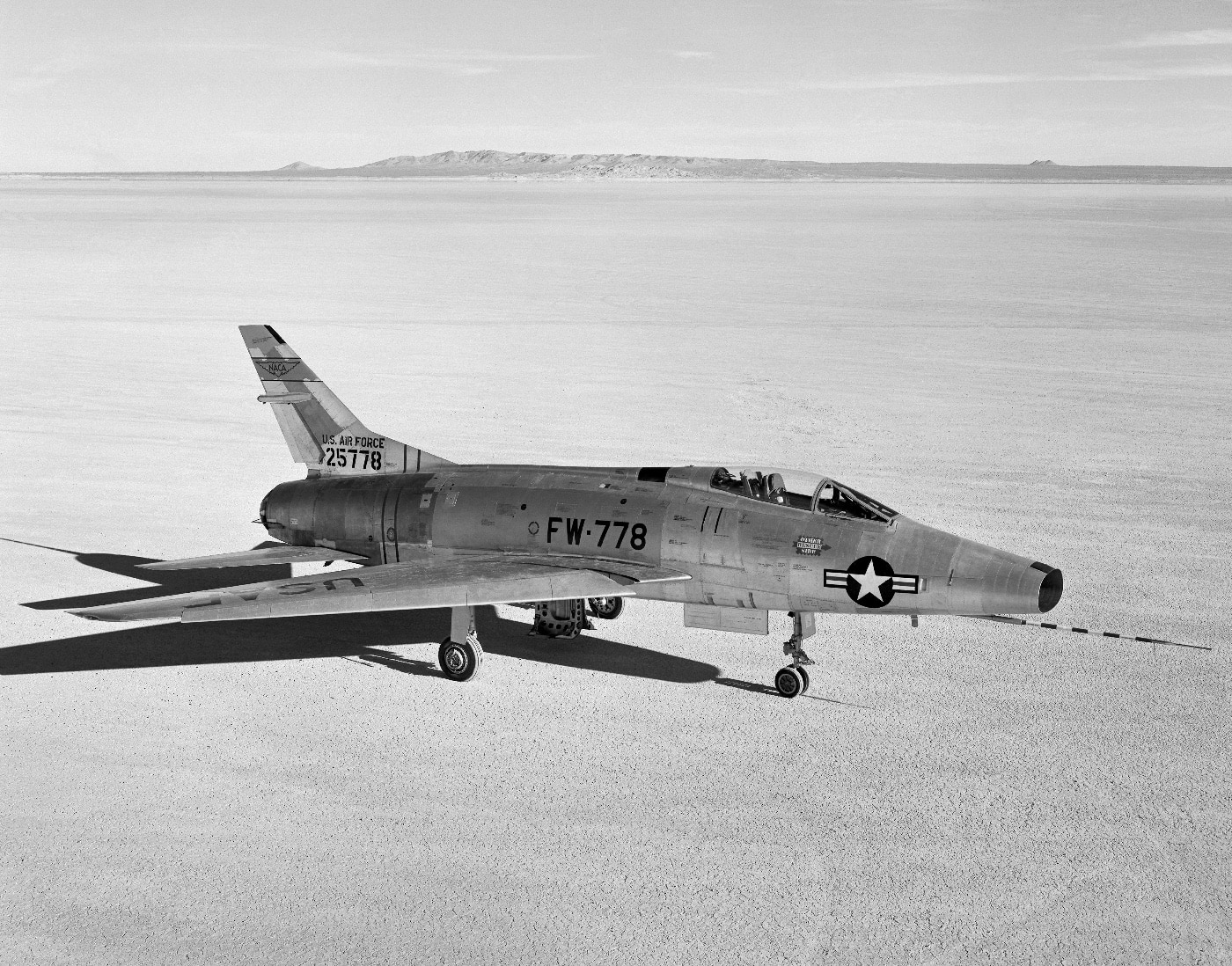
Each subsequent F-100C featured a $10,000 yaw dampener designed to mitigate the loss of control that had claimed so many previous aircraft. Given its speed, the F-100C was envisioned as a nuclear toss bomber capable of fast insertion into contested airspace followed by the delivery of a single massive thermonuclear bomb. These capabilities also made the plane appealing as a strike fighter in Vietnam.
Scary Numbers
With the benefit of hindsight, the Hun was a deathtrap. In the first six weeks of operational deployment, six F-100A’s were lost to in-flight accidents. From 1953 — 1957, dozens of aircraft were lost to accidents. In 1958 alone, we lost 116 planes and 47 pilots to mishaps. Those early Huns were terribly unforgiving planes to fly.
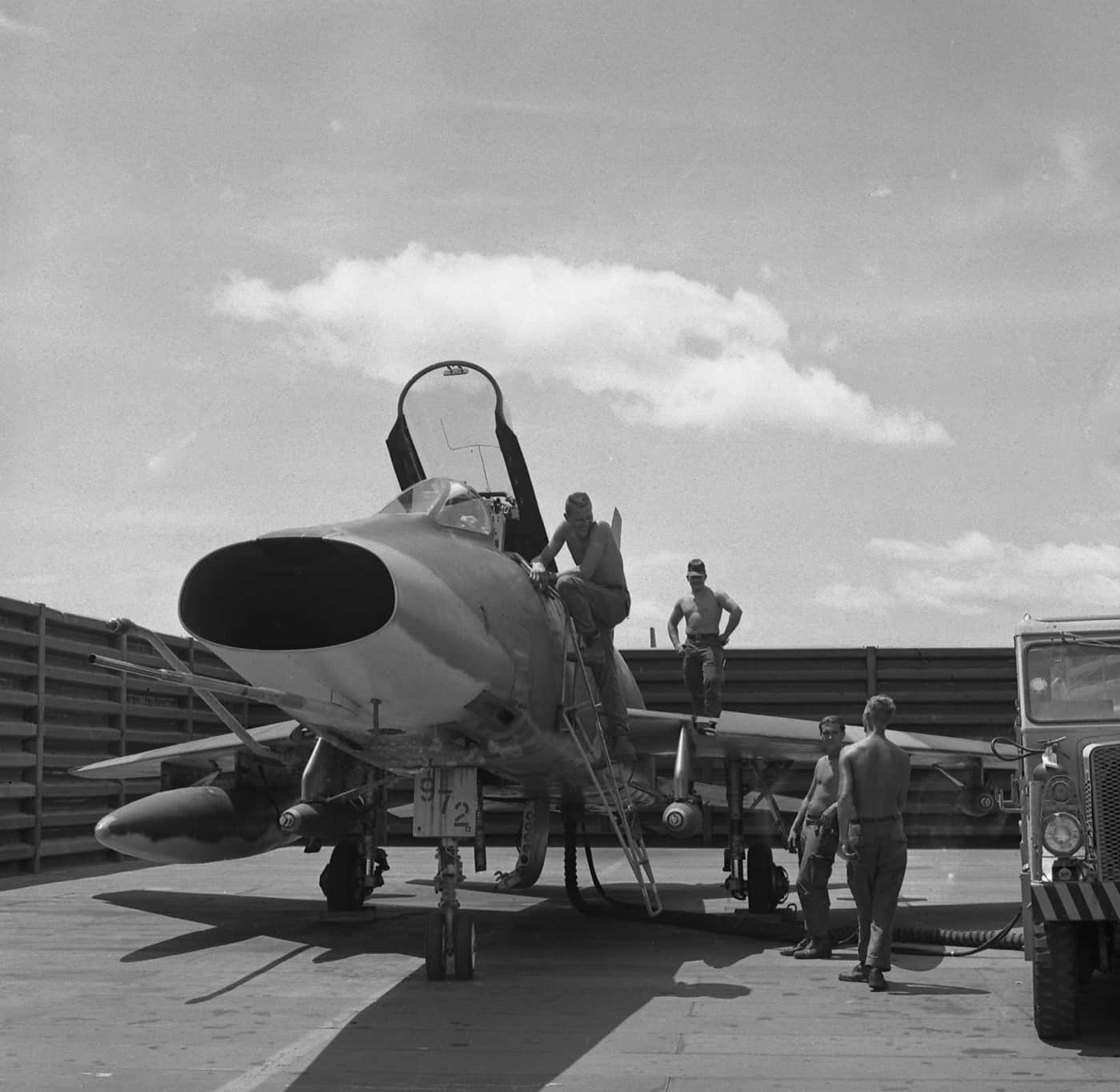
By the time the F-100C was finally phased out in 1970, 85 C-models had been inadvertently destroyed. The F-100D was the definitive version and arguably the safest to fly, though this was still quite relative. The D-model wingspan was stretched by two feet and the vertical fin area expanded by 27%. However, the Air Force still lost dozens of F-100D airframes to accidents. At the height of the type’s employment in Vietnam, we were losing about one Hun per week.
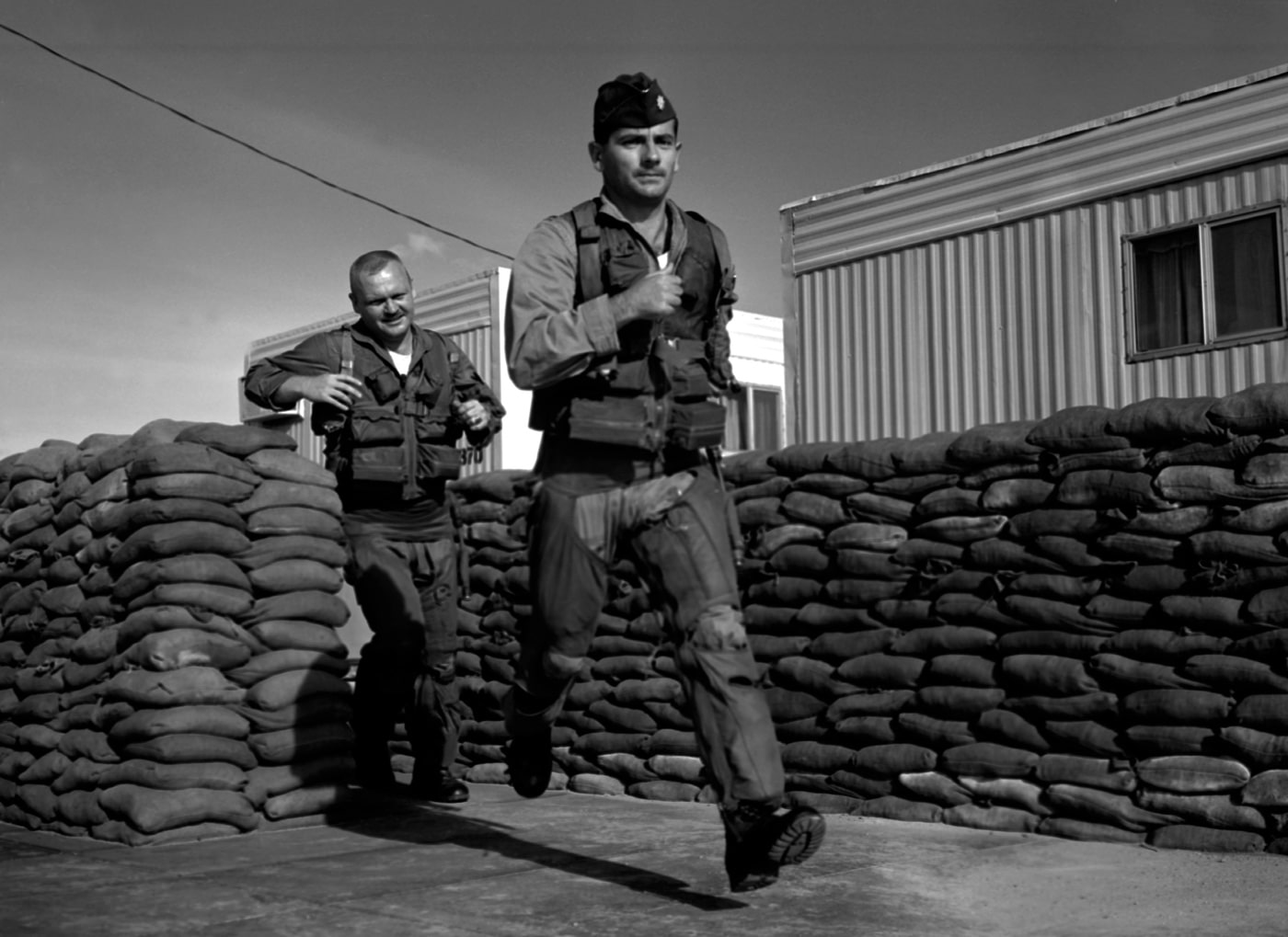
The F-100 was the first strike fighter used in Vietnam. It finally left the theater in 1971. During the war, the F-100s flew 360,283 combat sorties. Air National Guard Huns alone fired 4 million rounds of 20mm ammunition, dropped 30 million pounds of bombs, and dispensed another 10 million pounds of napalm. The F-100 flew more combat missions over Southeast Asia than did all 15,000 P-51 Mustangs used in World War II.
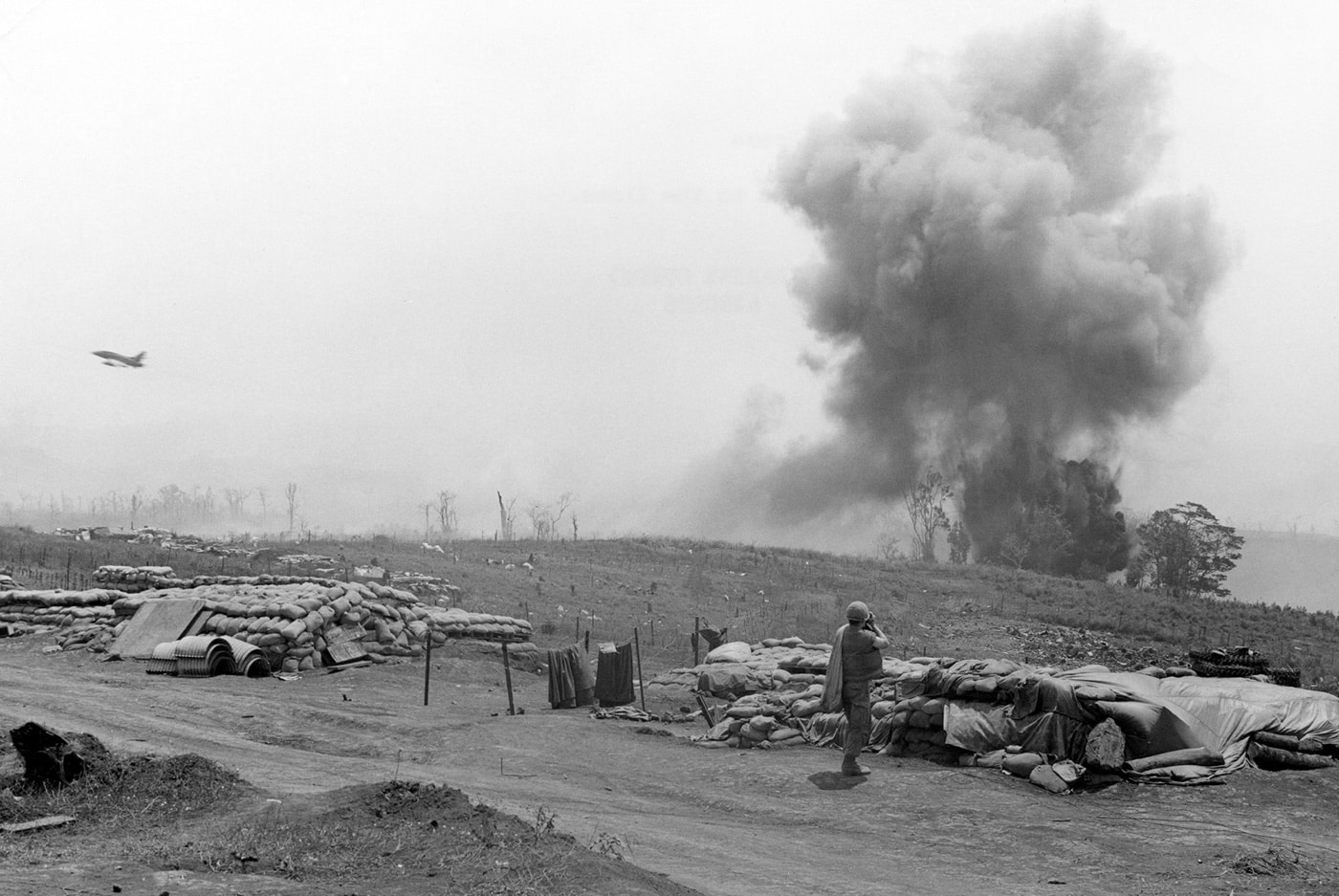
A total of 242 Huns were lost in Vietnam, 186 of those to ground fire. There were no F-100’s shot down by North Vietnamese fighters. 889 aircraft were lost in accidents over the type’s service life. Those accidents claimed the lives of 324 Air Force pilots. That’s out of a total production of 2,294 airframes.
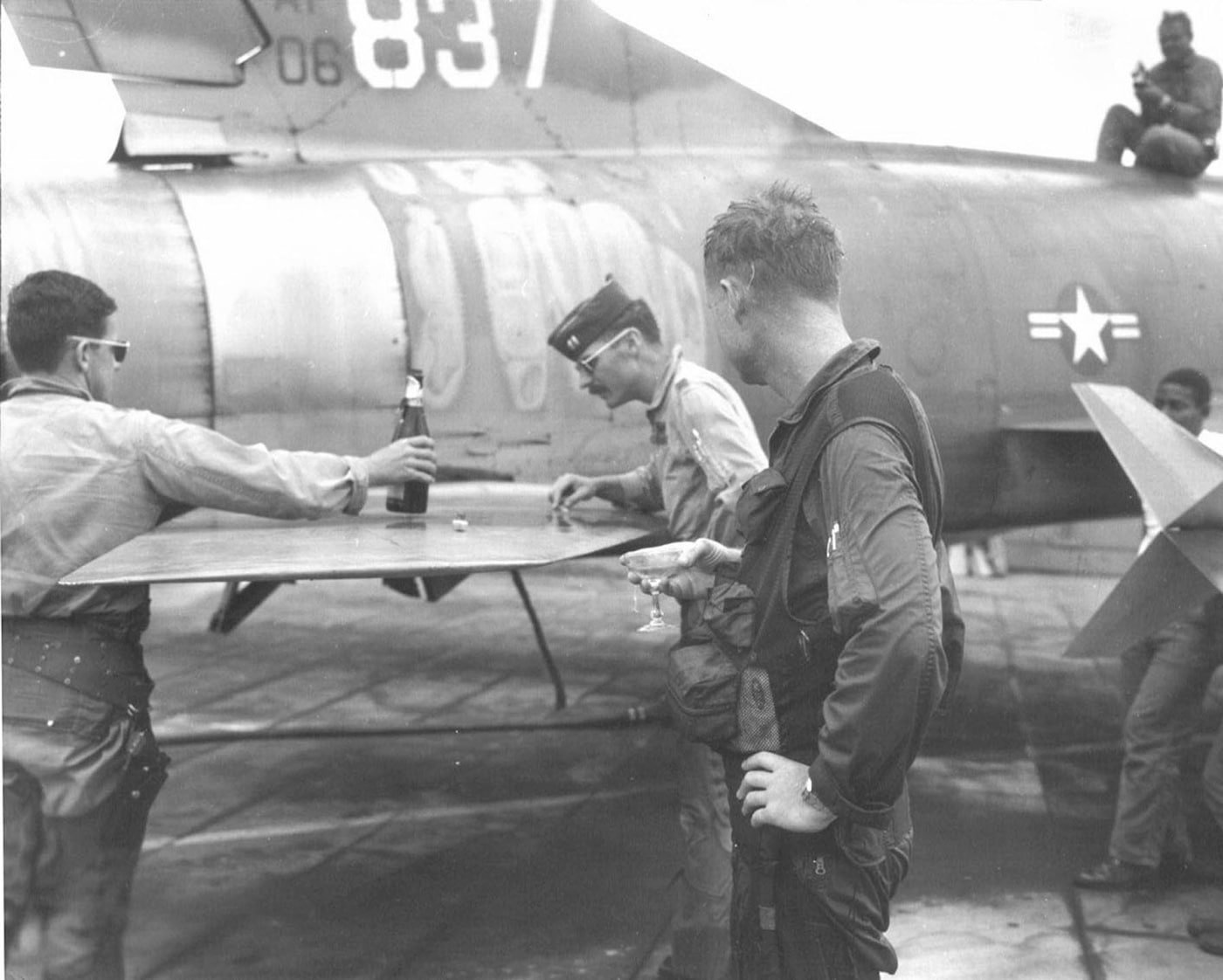
If my math is correct, that equates out to an overall loss rate of 47%, which honestly strains credulity. Over the course of the plane’s service life, it would have been safer flying combat over Europe during World War II. It might have been safer to have been an electric chair tester than a Hun pilot.
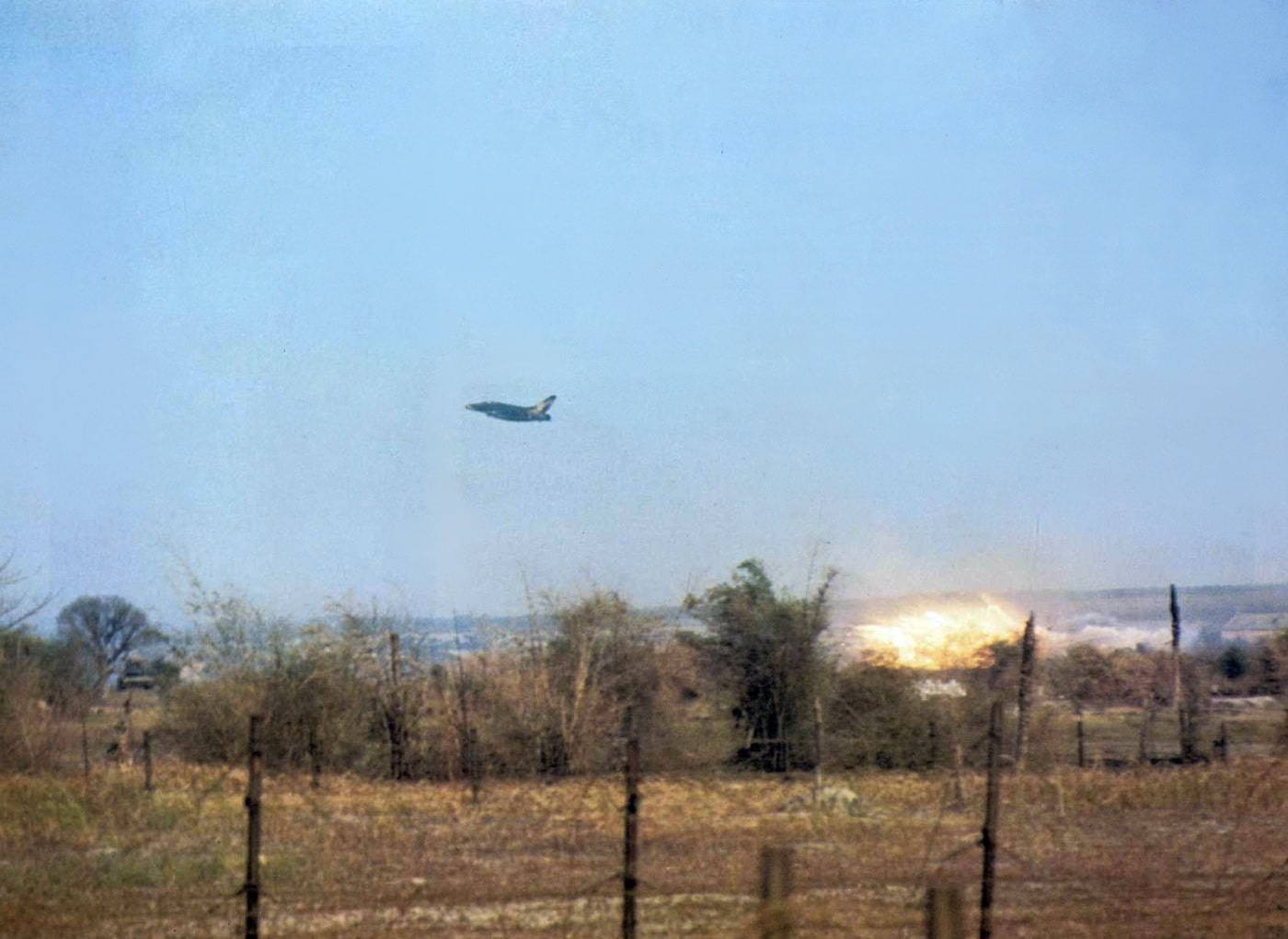
F-100D Technical Specifications
- Crew: 1
- Length: 50′
- Wingspan: 38′
- Max Takeoff Weight: 34,832 lbs
- Powerplant: Pratt and Whitney J57-P-21/21A afterburning turbojet
- Max Speed: 924 mph/Mach 1.4
- Range: 1,995 miles
- Guns: 4x M39A1 20mm cannon with 200 rounds each
- Armament: 6 hardpoints with a total capacity of 7,040 lbs of ordnance
Ruminations
Things were different back when steely-eyed missile men strapped on the Hun and went downtown to do battle against the weapons specifically designed to kill them. The American people would never tolerate loss numbers like these today.
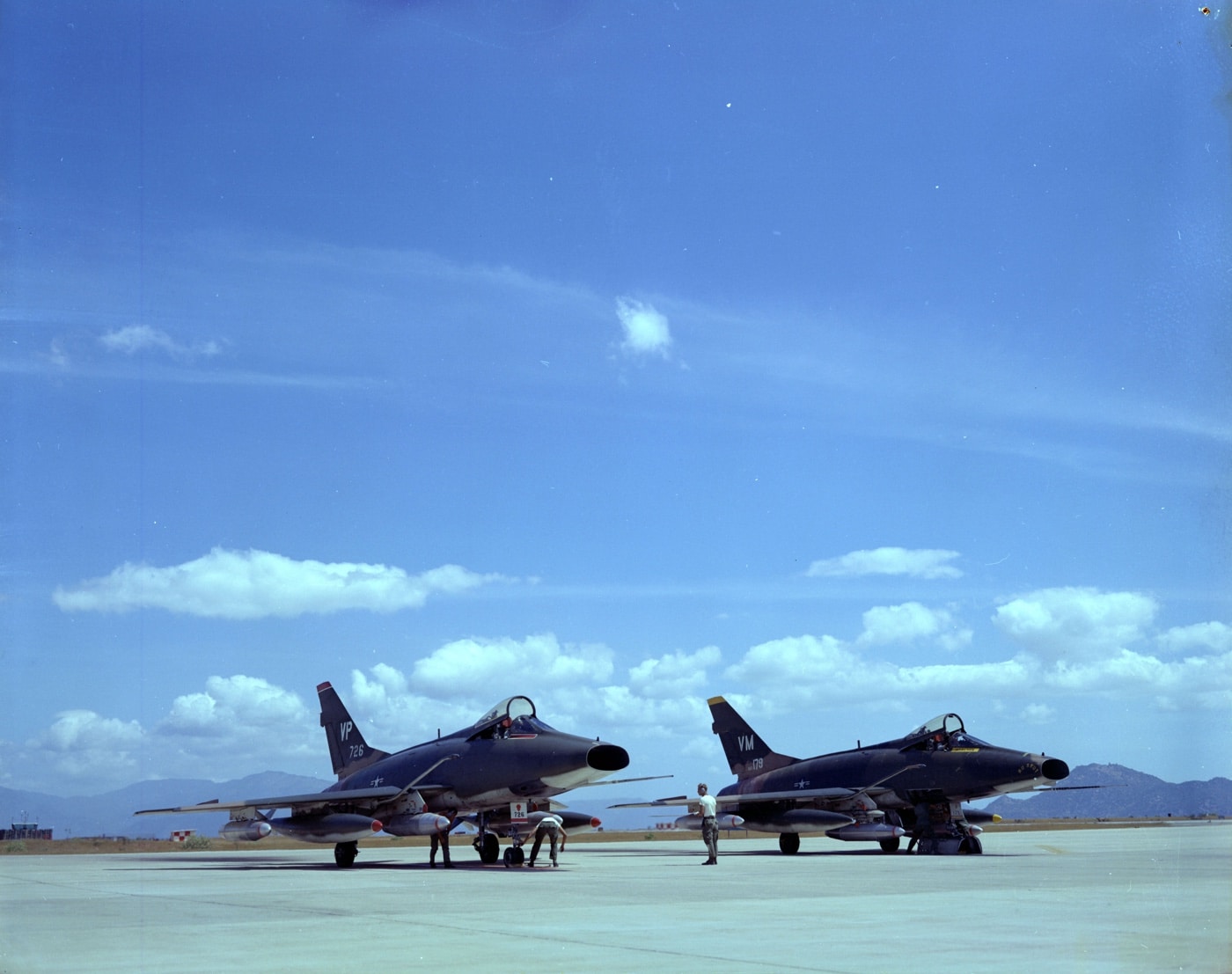
However, the tactics these young men pioneered shaped the way we fly and fight today. Considering almost half of the airframes produced were destroyed in either combat or accidents, that is bravery on a whole different level.
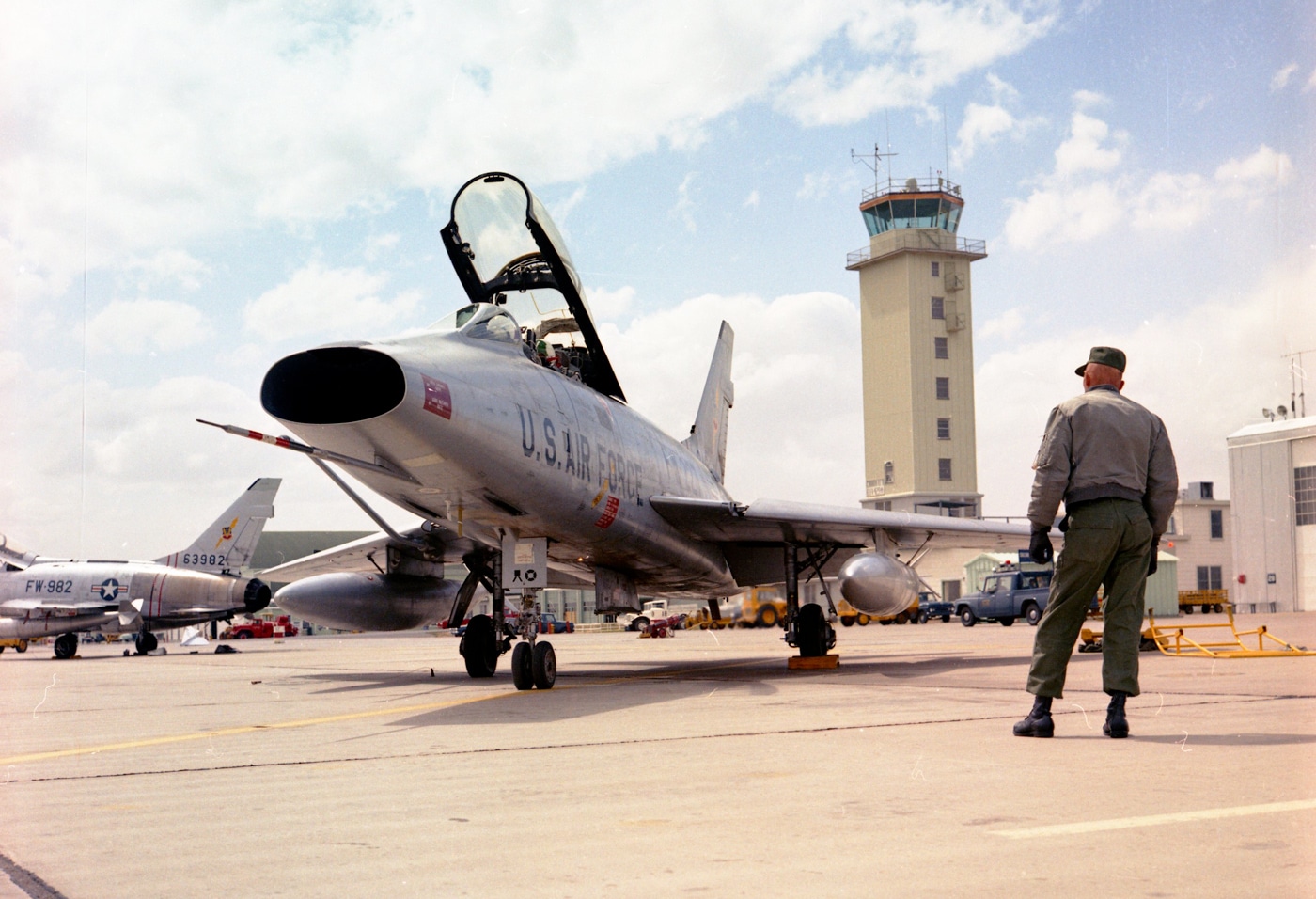
Editor’s Note: Please be sure to check out The Armory Life Forum, where you can comment about our daily articles, as well as just talk guns and gear. Click the “Go To Forum Thread” link below to jump in and discuss this article and much more!
Join the Discussion
Continue Reading
Did you enjoy this article?

 384
384






